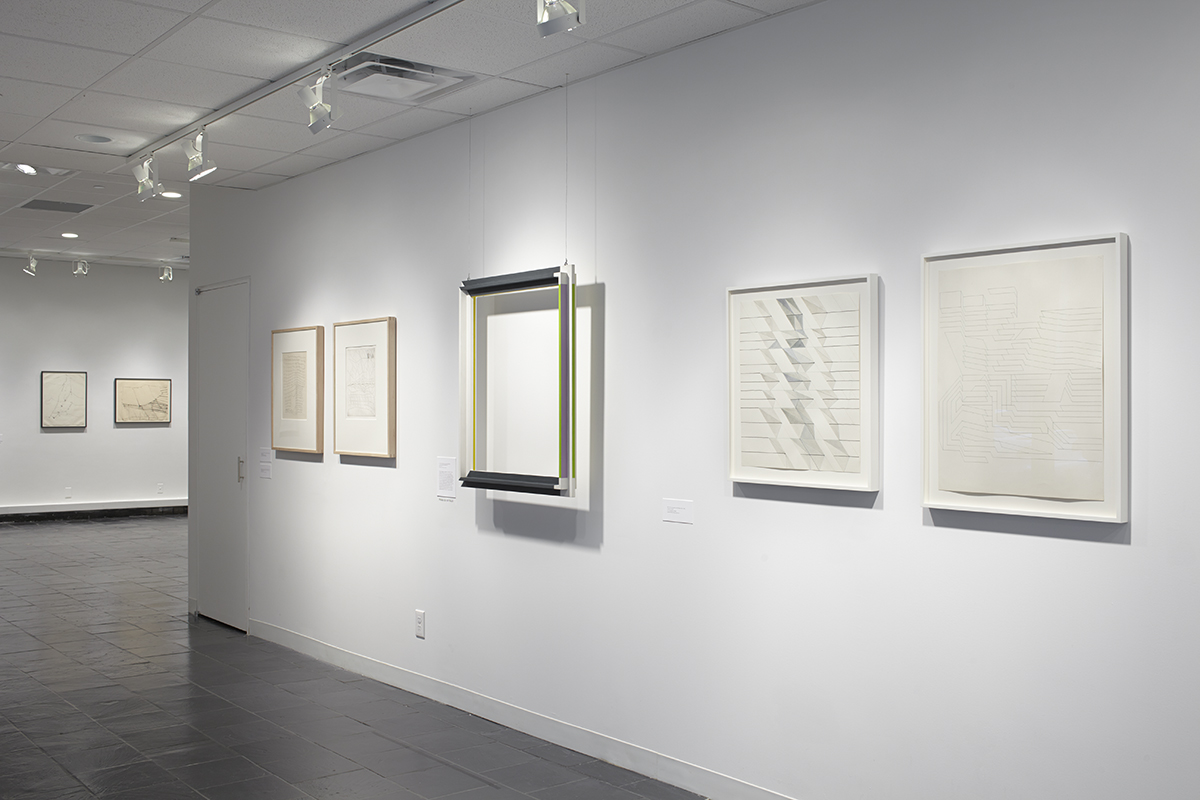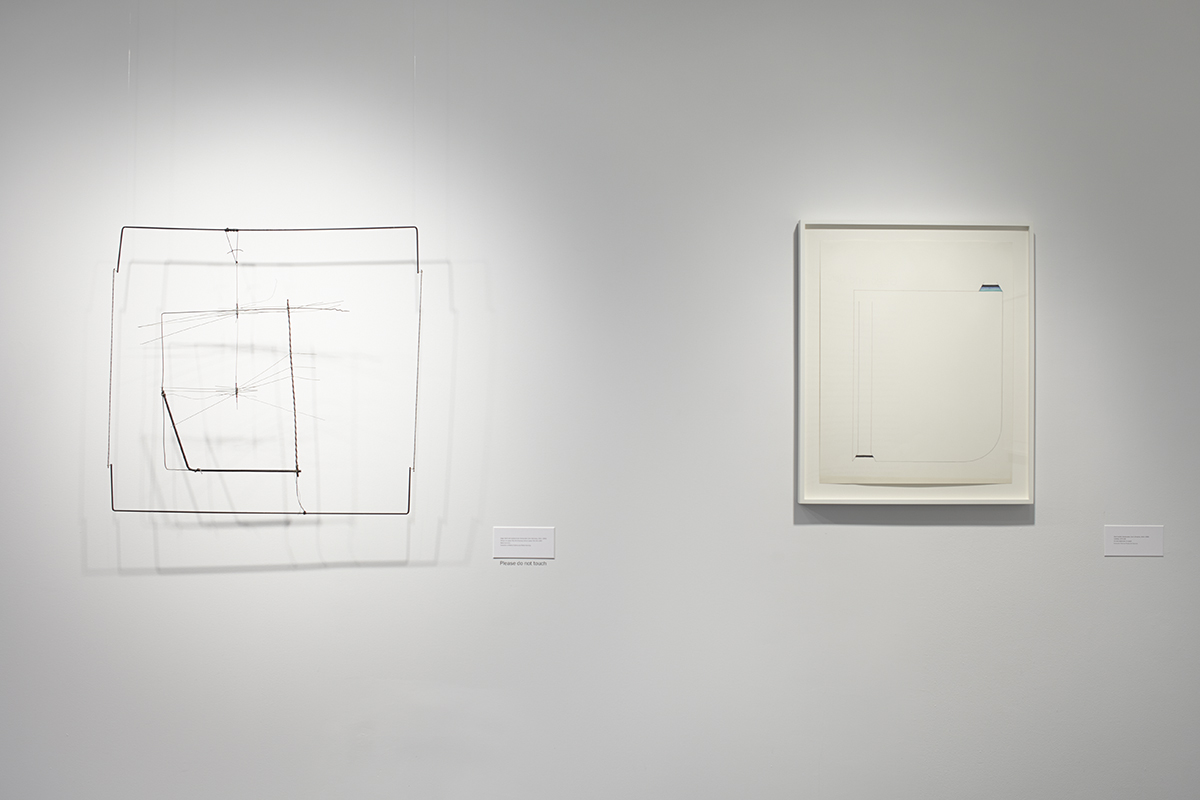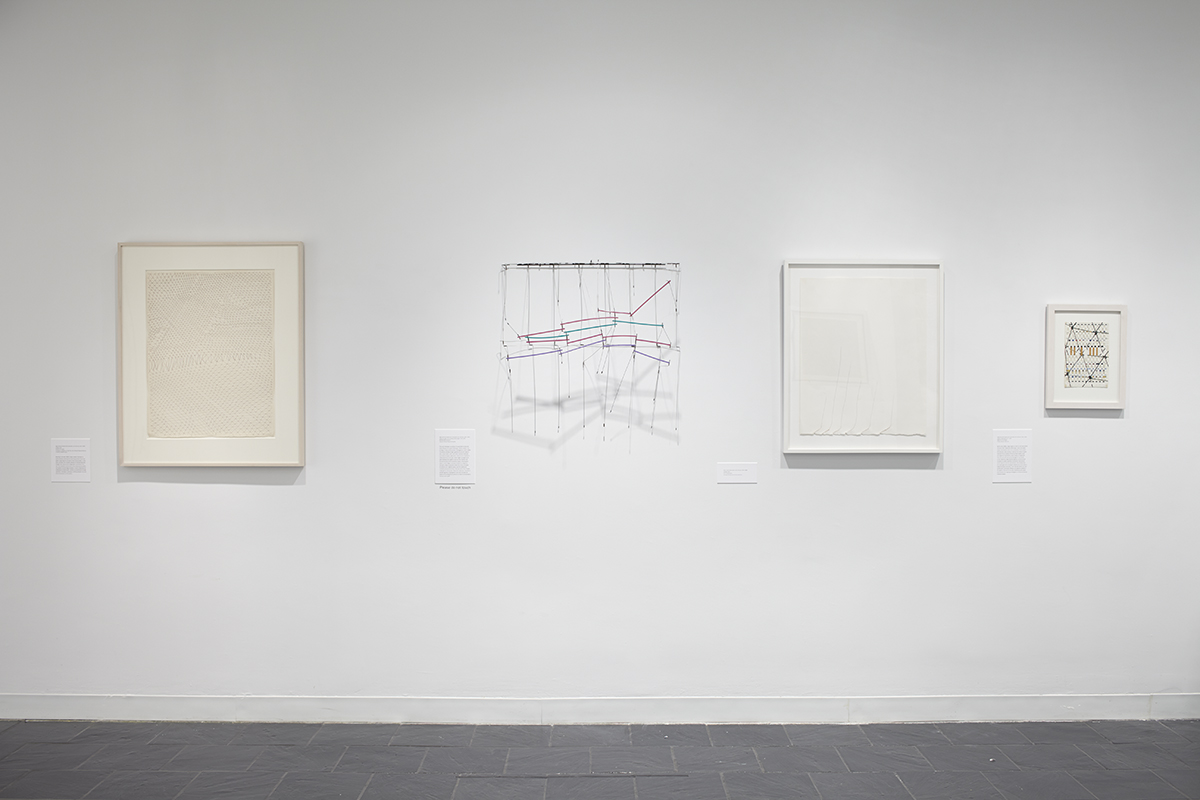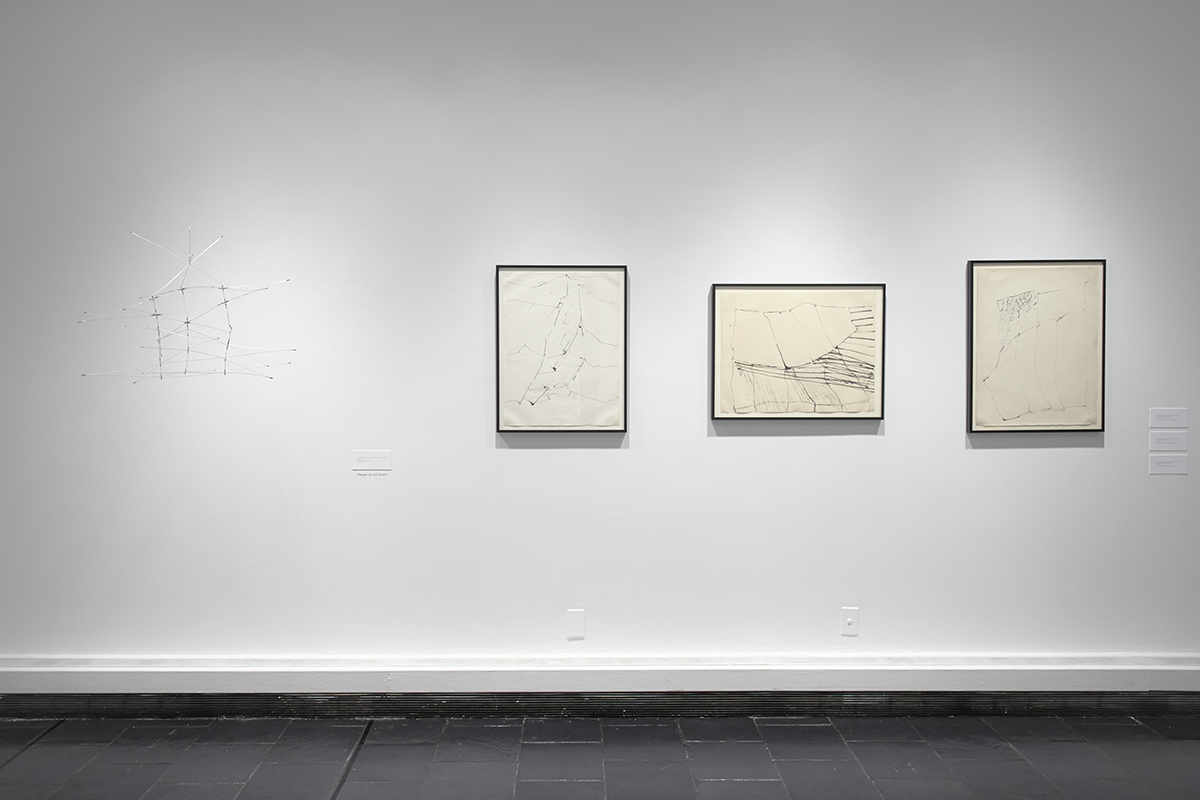







Installation view: Gego and Gerd Leufert: A Dialogue, Hunter College Art Galleries, 2014. Photo by Peter Butler.
Gego and Gerd Leufert: A Dialogue
Curated by Geaninne Gutiérrez-Guimarães
Organized by Sarah Watson and Annie Wischmeyer
October 3–November 22, 2014
Opening Reception: October 2, 7–9pm
Leubsdorf Gallery
Hunter West Building
132 East 68th Street
New York, NY 10065
Hours: Wednesday–Sunday, 1–6pm
Gego (Gertrude Goldschmidt, Venezuelan, born Germany, 1912–1994) and Gerd Leufert (Venezuelan, born Lithuania, 1914–1998) are among the most significant artists that worked with the language of abstraction during the second half of the twentieth century in Venezuela. The exhibition Gego and Gerd Leufert: A Dialogue highlights the artists’ development and reciprocal influence through a selection of core works produced from 1964 to 1990. The show explores shared motifs in the production of each of these artists, most notably their use of the line as a means of enhancing the visual potentiality of empty spaces in two- or three-dimensional form. The partnership between Gego and Leufert resulted in lifelong mutual support that concurrently nurtured their personal relationship and their independent careers as artists. Gego and Gerd Leufert: A Dialogue provides a long-overdue, tandem examination of the artists’ works; the exhibition unveils an underlying, parallel dialogue of nonobjective language within their organic forms, linear structures, and systematic, spatial investigations. Both ultimately became pioneers in their field and had a long-lasting impact on future generations of artists at national and international levels.
The opening of Gego and Gerd Leufert: A Dialogue coincides with the centenary celebration of the artists’ births. This unique timing opens the door for continued critical discussion of their significant roles in modern art history.
Gego was born Gertrude Goldschmidt in Hamburg, Germany, in 1912, and migrated to Venezuela in 1939, fleeing Nazi Germany. Trained as an architect at the Technische Hochschule (Technical School) of Stuttgart, now the Universität Stuttgart, she graduated in 1938 with a degree in engineering and began her career in Caracas working at several architectural firms. Gego maintained her practice of painting and drawing, and in the early 1950s, she abandoned her architectural work to pursue art full-time. In 1954 she exhibited for the first time in Venezuela at the XV Salón Oficial Anual de Arte Venezolano (XV Annual Official Salon of Venezuelan Art) at the Museo de Bellas Artes (Museum of Fine Arts), Caracas, and earned her first solo show in 1958. In the following decade, she explored the relationship between line, space, and volume using a nonobjective language. She continued to develop her visual vocabulary, working in engraving and sculpture and fastidiously conducting investigations of spheres and cubes; the overall dynamism created by her lines set her apart from her peers. From 1963 to 1967 Gego focused on refining her printing technique with grant-funded trips to print workshops at the Pratt Institute in New York and the Tamarind Lithography Workshop in Los Angeles. At the 1967 XXVIII Salón Oficial Anual de Arte Venezolano (XXVIII Official Annual Salon of Venezuelan Art) she was awarded a prize for her lithographs. In 1979 she received Venezuela’s Premio Nacional de Artes Plásticas (National Fine Arts Prize), and in 1981, her installation Reticulárea (Reticula [Nets] + Area) was permanently installed at the Galería de Arte Nacional (National Art Gallery), Caracas. Gego’s oeuvre was iconic among her contemporaries, proponents of Venezuelan geometric abstraction and kinetic art, such as Jesús Rafael Soto and Alejandro Otero, and post-war Constructivists. Gego passed away in Caracas in 1994.
Gerd Leufert was born in 1914 in Memel, a coastal Lithuanian town later occupied by Germany. He attended the Akademie der Bildenden Künste (Academy of Fine Arts) in Munich in 1939 where he studied graphic design and became a member of the Werkbund, an interdisciplinary association founded on the social importance of design and craftsmanship. In 1951 he migrated to Caracas, Venezuela, where he excelled as a graphic designer. His contribution to the visual arts, graphic design, and museology is paramount in Venezuela. He was credited with bringing the rigor of German design principles to the country, and was well regarded for his work as a teacher of art and graphic design in various Caracas educational institutions. From 1961 to 1973, Leufert worked at the Museo de Bellas Artes (Museum of Fine Arts), Caracas, first as a designer, rebranding the museum’s visual identity, and later as the curator of drawings and graphic design. During his tenure he developed numerous exhibitions and published nearly three hundred exhibition catalogues, of which he personally designed two hundred. During this time he also published celebrated and award-winning books, including Visibilia (1966), Imposibilia (1968), Nenias (1970), and Sin Arco (1971), which featured his groundbreaking graphic design. Upon retirement, from 1974–79, Leufert was part of a group of four designers who developed a series of postage stamps, La nueva estampilla Venezolana (The new Venezuelan stamp), which were exhibited in Venezuela and Prague. Boundless in his invention, he then focused on creating sculpture in organic materials and on a new venture into photography. In 1990 he was awarded Venezuela’s Premio Nacional de Artes Plásticas (National Fine Arts Prize), which was followed by an exhibition of his photographs at Sala RG, Caracas, curated by Miguel Arroyo (Venezuelan, 1920–2004). In the last years of his life, Leufert continued to exhibit his drawings and photographs at Centro Cultural Consolidado (Consolidated Cultural Center), Caracas (1992), Museo de Arte Contemporáneo (Museum of Contemporary Art) de Maracay Mario Abreu (1992), and Museo de Bellas Artes (Museum of Fine Arts, 1994–95). He passed away in Caracas in 1998.
This exhibition is made possible with the generous support of Patricia Phelps de Cisneros, the ISLAA (Institute for Studies on Latin American Art), the GPM Fund, Solita Mishaan, Andrea and José Olympio Pereira, and the Sicardi Gallery, Houston. We are also extremely grateful for the leadership support of the Hunter College Art Galleries provided by Carol Goldberg and Agnes Gund and by an anonymous donor.
Press
New York Times
Space Objects
Studio International
Catalog
Issuu (Link)

